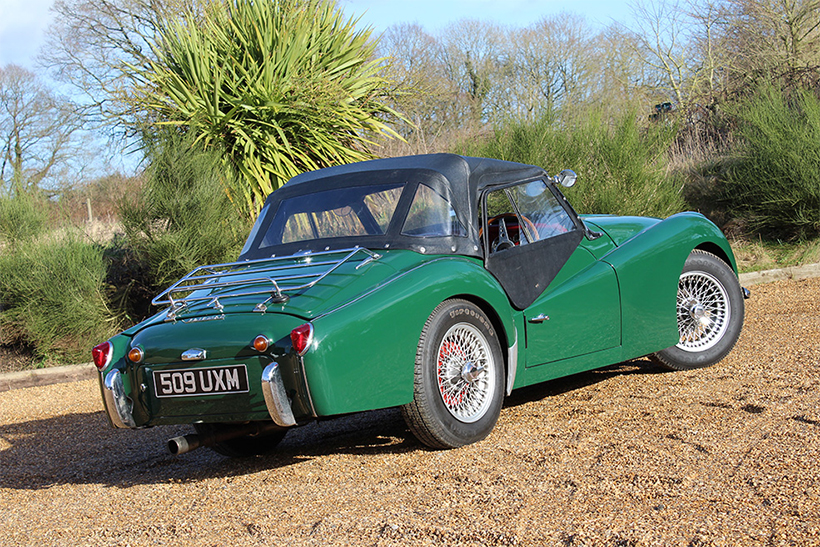1. The TR4 swapped from SU carburettors to Strombergs in 1962. The SU company was owned by rival maker BMC which no doubt prompted the move. It was also rumoured that MG was paying half as much for its carburettors as Standard-Triumph.
2. TR bodies were assembled in Triumph’s facility at Speke and then transported part-trimmed to Coventry for assembly by road.
3. Part of the reason for the well-documented failure of the Lucas injection pump is that it was in fact a modified wiper motor and not really up to the task, especially when sited above the hot exhaust.
4. The TR6’s Kamm-tail styling my look like the Michelotti-styled Triumph saloons but was in fact styled at Karmann.
5. The TR4 was optionally available with the TR3A-spec 1991cc engine for owners wishing to race in under 2-litre classes.
6. Body plates in TR4s will state the maker’s name as Standard Motor Company Limited but but from the TR4A onwards it was frequently changed. You’ll see Standard Triumph Motor Company Limited, Triumph Motor Company Limited, Triumph Motors British Leyland UK Limited and Triumph Motor Company.
7. For owners hardy enough to use their TR6s through the Canadian winter, a special 13-plate battery was an optional extra.
8. Most cars supplied from new with a factory hard top didn’t come with the convertible hood or its tonneau cover. A conversion kit could be bought as an accessory.
9. Low-compression engines were an option from new on cars used in parts of the world where high-octane fuel was unavailable, but a retrofit kit was also available, comprising a simple spacer plate and longer pushrods.






